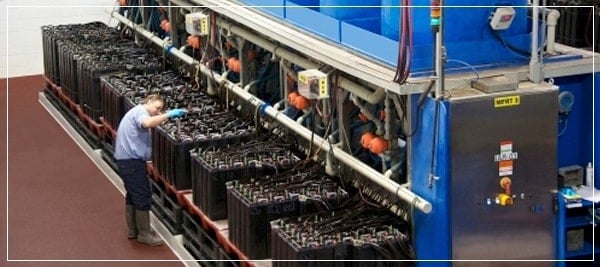All trustworthy lead battery manufacturers mirror manufacturing and quality control methods for their batteries. The difference, like most things, is in the details. How your lead battery is built matters and manufacturers should be able to confirm if they follow these 8 keys steps to manufacturing a quality lead-acid battery you will feel confident installing in your machinery or vehicle.
Cost VS quality
Batteries require heavy, gravity-cast plates with more lead based paste added - even when raw material costs rise. The manufacturer of your battery should not be cutting costs on this essential first step.
Battery Research and development
Manufacturers should continue to learn, advance and adapt to new technology by investing heavily in research and design, manufacturing process, testing equipment, and technical expertise.
Environmental impact
Just because lead batteries have been in use since 1859 doesn’t mean their environmental responsibility should be dated. Battery production today is very environmentally responsible, from using recycled lead to solar arrays and wind turbines in their plants.
Learn the manufacturers productions processes
Know how a battery manufacturer uses technology and computerized systems in their productions processes. Systems can produce and mix lead oxide, cure plates, and perform formation charging to increase productivity and reduce waste.
Understand how the battery works
Understand the separation and wrapping used. Batteries require high-performance separators and automated wrapping to eliminate plate short-circuiting during service life.
Know the physical setup of the battery
Robotics and cast-on strap (COS) welding processes should be implemented on all assemblies to ensure the correct placement and connections within the battery cell.
Product testing
Since lead batteries are a consumable product, testing from the production line should be used as products are being produced.
supplement inspections
Finally, automated inspections should be supplemented with vision systems and hands-on inspections.
Knowing how your battery is built, means your only concern should be selecting the right size and capacity for your specific application.












